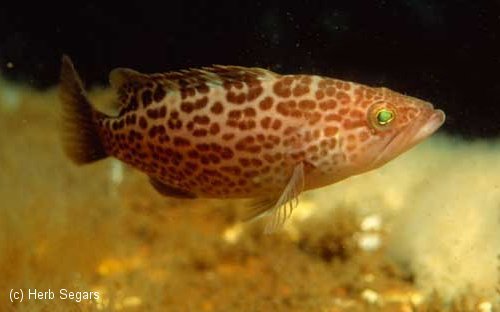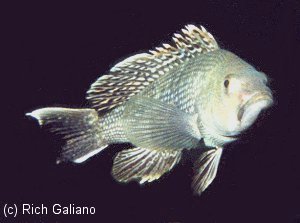Black Sea Bass
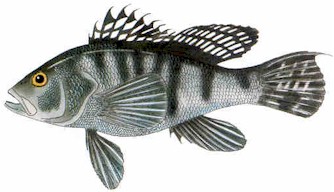
Centropristis striata
Profile by Thomas Baum,
Senior Fisheries Biologist
Range:
Atlantic coastal waters of the United States, from northern Florida to Cape Cod, occasionally to Maine.
Size:
The average is less than 1 pound, up to 3 pounds and 9" to 20" long, with an occasional individual reaching 7 pounds; males are usually larger than females. Most females average 3 to 5 years old, the oldest reaching 8 years old, while males can live to 20 years, with 6- and 7-year-olds predominating. This seemingly odd difference in age between the sexes is due to a sex reversal explained below.
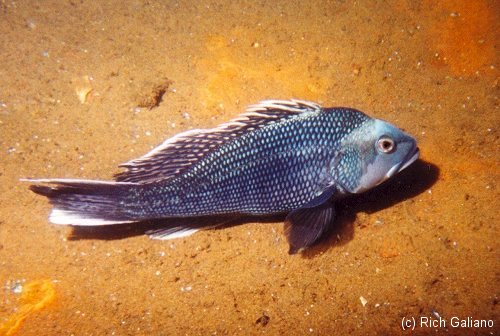
Food:
Black Sea Bass appear to feed by sight and are opportunistic omnivores ( taking advantage of whatever is available. ) Stomach analyses have shown that crustaceans, fish, mollusks, and echinoderms ( starfish, sea urchins ) are part of their diet. Larger fish prefer crabs and fish; younger ones eat shrimp and various crustaceans.
Migration:
Black Sea Bass move inshore and north for the summer and offshore in the winter. The larger and older fish move offshore sooner and winter in deeper water than their younger cohorts.
Habitat:
During the warmer months when sea bass are in water depths less than 120 feet, they are attracted to hard bottom around rocks, wrecks, and reefs. Small, juvenile Sea Bass inhabit deep holes and grass beds in coastal bays and shell bottoms in near-shore ocean waters.
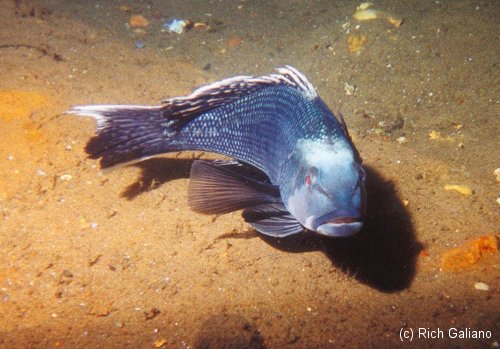
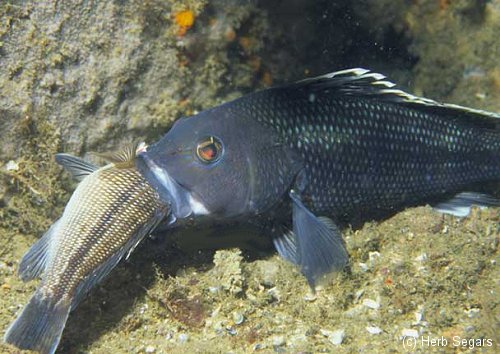
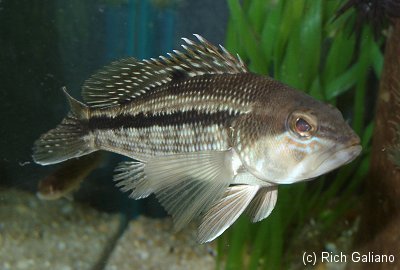
Spawning:
Females mature around 2 years and older. Black Sea Bass are protogynous hermaphrodites, meaning that they start their lives out as females, then become males. This transformation of sexes occurs between 2 and 5 years of age ( 6-12 inches in length ), accounting for males being larger and older. Spawning occurs in May off the North Carolina coast, later in May and through June off New Jersey, the Long Island Sound, and New England. The eggs ( spawned in the open ocean ) are buoyant ( free-floating ), non-adhesive and hatch in three days. Sea Bass are a member of the grouper family (Serranidae), and males are thought to be territorial. Older males develop a fatty hump on the back in front of the dorsal fin. Males can be further distinguished from females by their overall darker color and brilliant blue patches around the head; females are usually a light brown coloration.
Recreational and Commercial Importance:
During years of sea bass abundance, commercial gear is used to target them. The most popular type of gear used is fish pots, set close to reefs, wrecks, and other known Sea Bass areas. Sea Bass are also caught in otter trawls on their offshore wintering grounds. They can be sold as whole fish or larger ones can be filleted.
This fish has become a staple to many party boat operators along the coast. Some target Sea Bass during bottom and reef fishing trips, along with tautog. In 1991, recreational anglers caught over 5 million Sea Bass in New Jersey.
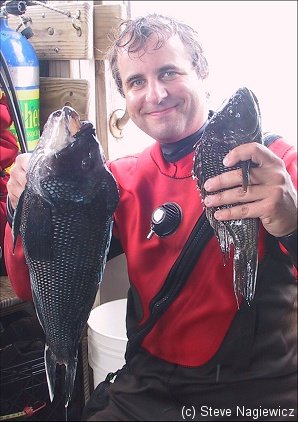
on the right, and an enormous 18",
4-pound "super-male" on the left.
State record is 8 lbs 2 oz.
Besides being targeted by private and party boats on reefs, rocks, and other known locations, Sea Bass are commonly caught while fishing for other species such as summer flounder, weakfish, bluefish, or tautog. Juvenile Sea Bass from 1 to 6 inches are often caught in the back bays along the New Jersey coast. A standard deep-water rig consists of a swivel, enough weight to hold bottom and an 18-inch leader with 2/0 to 5/0 hooks ( 2 to 3 hooks per rig ). Jigging with diamond jigs is also used. Cut squid and clams are the most widely used bait, while worms or mussels can also be used. Sea Bass tend to be caught more readily when there is a good current. They are good fighters for their size and if given the opportunity, will head for holes or crevices in the rocks or bottom debris when hooked. Therefore, a conventional boat rod and reel with 20-pound test monofilament is advisable.
Acknowledgments and References:
Bigelow and Schroeder (1953)
Hildebrand and Schroeder (1972)
Kendall (1977)
This article first appeared in New Jersey Reef News - 1997 Edition
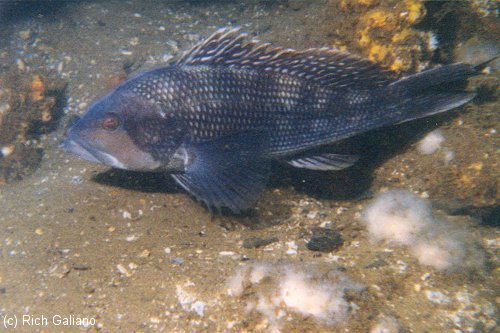
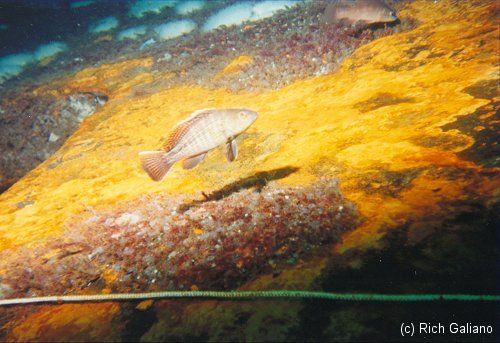
- Tagging Study Of Black Sea Bass In New Jersey Ocean Waters
- Micro-Movements of Black Sea Bass on the Atlantic City Reef Site
- The Importance of Artificial Reef Epifauna to Black Sea Bass Diets in the Middle Atlantic Bight
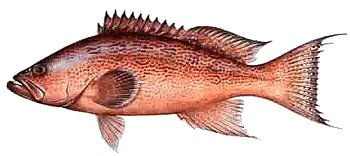
Similar to the Black Sea Bass, but far less common, is the attractively colored Scamp (right) which might at first be mistaken for an errant tropical, but is in fact a native fish. Note the ragged bristly tail of the adult.
